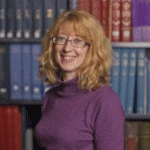Scott Trowell – Question 4
April 2014
4What do recent developments in archival representation mean for the use of specific archives in teaching and public engagement?
Clare Scott
Faculty of Arts and Humanities Librarian – University of Sheffield
Ian Trowell
Collections Manager for National Fairgrounds Archive, Western Bank Library – University of Sheffield
¶ 1 Leave a comment on paragraph 1 0 “Recent developments” in our case are driven predominantly by digital methods. This comes from a mix between generated user expectations and library and archive trends. Digitization can be a great enabler for engaging with students and members of the public. Archives have traditionally been more welcoming to scholars and specialists than to amateur researchers. All researchers, scholarly or from the general public, are expected to abide by arcane regulations and rules of access. Typical of this are the mandatory instructions from The National Archives in the United Kingdom to use “a soft leaded pencil,” to “wash your hands but avoid the use of hand-cream,” and that “documents should not hang off the edge of the desk or be held when read.”1 All of these commands may seem draconian or intimidating to the uninitiated, however necessary they are. Archivists and librarians are not creating barriers for the sake of it but to protect and preserve the precious items in their collections from damage.
¶ 2 Leave a comment on paragraph 2 0 Digitization frees the archive from the constraints of delicate and ancient documents. It also means that keepers of the materials have the potential to be freed from their primary role as guardians and become agents of access, without fear of failing in their task of gate keeping and guarding the treasure.
¶ 3 Leave a comment on paragraph 3 0 University librarians often focus on their distinctive archival collections as a promotional tool. This is what makes a university, or its library collection, unique and distinctive. Sometimes these collections are housed in specialist archival buildings, which are also used as a marketing highlight, for example the John Rylands Library at the University of Manchester2 or the Weston Library (formerly the New Bodleian), University of Oxford.3
¶ 4 Leave a comment on paragraph 4 0 One of the practical consequences of living in a digitized world is that library online collections become increasingly homogenized. The catalogs for exploring the collections are also increasingly driven by similar resource-discovery software. Some presentations of archival collections as online databases can add value; for example, the Mass Observation Online collection is presented in such a way as to reproduce the experience of visiting the archive at the University of Sussex, where this Special Collection is held.4 What appears on the screen is a digitized version of what you would find inside the archival boxes. However, you can also see a transcript of this, which is more legible than original handwriting, by simply clicking a button. This type of digitized presentation adds value, facilitating text mining, for example, so that styles and structural patterns of language can be studied. A digital resource can add value, for example by putting manuscripts and photographs together with mapping data. Viewing a transcript may eliminate the need for more traditional skill sets, such as learning palaeography for reading ancient manuscripts, or at least open these materials up to a wider audience. It is possible to be more fluid in the digital world, re-packaging documents for a new target audience according to age, interest, or academic level. So the possibility of taking the archive out of the archive can become a reality, using digitized subsets of collections as marketing and promotional material or to raise awareness of what is held and what is available.
¶ 5 Leave a comment on paragraph 5 0 However, the flipside of these positive aspects of digitized materials is that they may create unrealistic expectations of what can actually be seen and handled. You may create too much demand for material that is too delicate to be seen, bearing in mind that not everything in archival collections is suitable for digitization.
- ¶ 6 Leave a comment on paragraph 6 0
- “Before You Visit,” The National Archives, http://www.nationalarchives.gov.uk/visit/before-you-visit.htm. [↩]
- John Rylands Library, University of Manchester, http://www.library.manchester.ac.uk/rylands/. [↩]
- Weston Library, University of Oxford, http://www.bodleian.ox.ac.uk/our-work/estates-projects/weston. [↩]
- Mass Observation Archive, University of Sussex, http://www.sussex.ac.uk/library/speccoll/collection_introductions/massobs.html. [↩]



0 Comments on the whole post
Leave a comment on the whole post
0 Comments on paragraph 1
Leave a comment on paragraph 1
0 Comments on paragraph 2
Leave a comment on paragraph 2
0 Comments on paragraph 3
Leave a comment on paragraph 3
0 Comments on paragraph 4
Leave a comment on paragraph 4
0 Comments on paragraph 5
Leave a comment on paragraph 5
0 Comments on paragraph 6
Leave a comment on paragraph 6